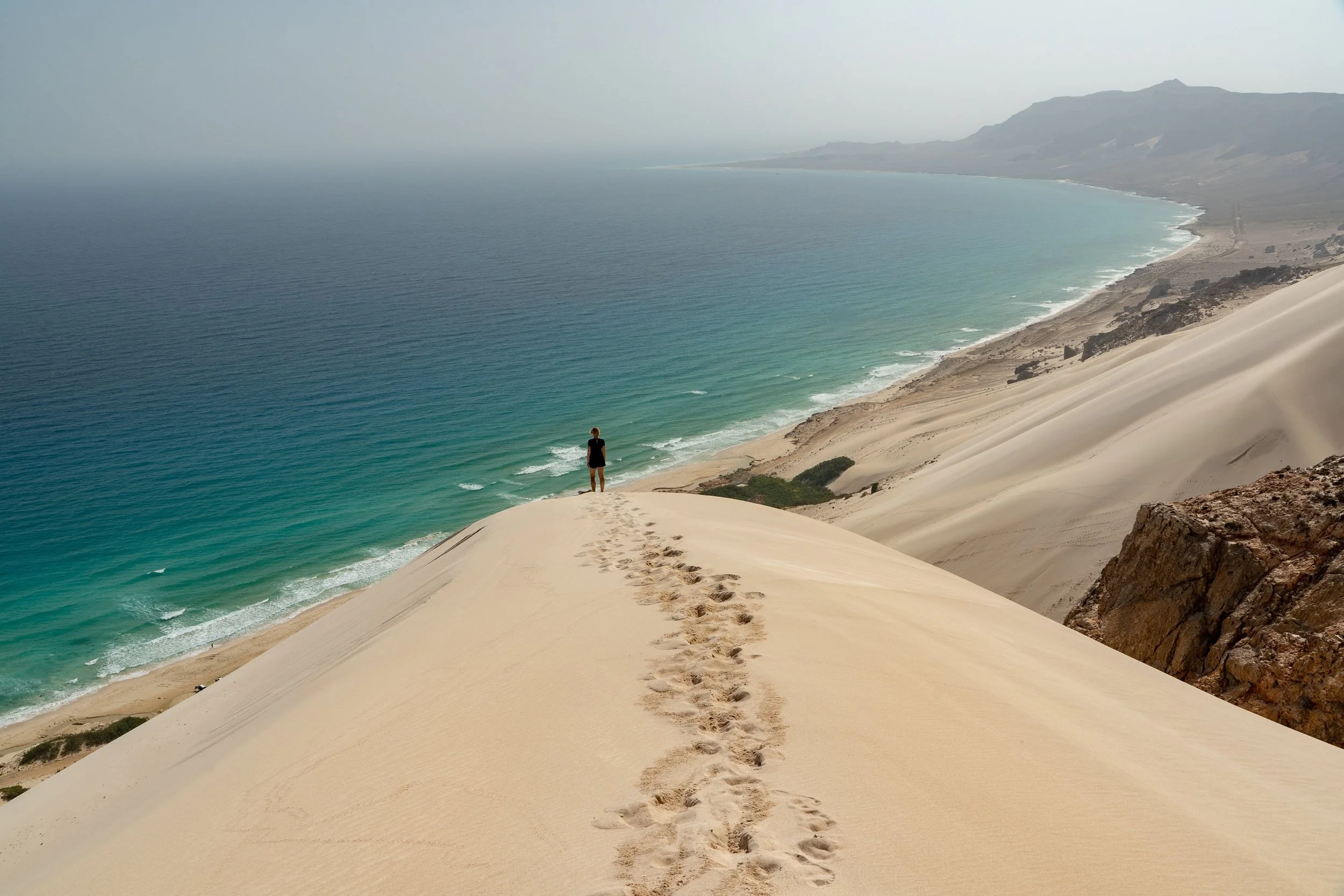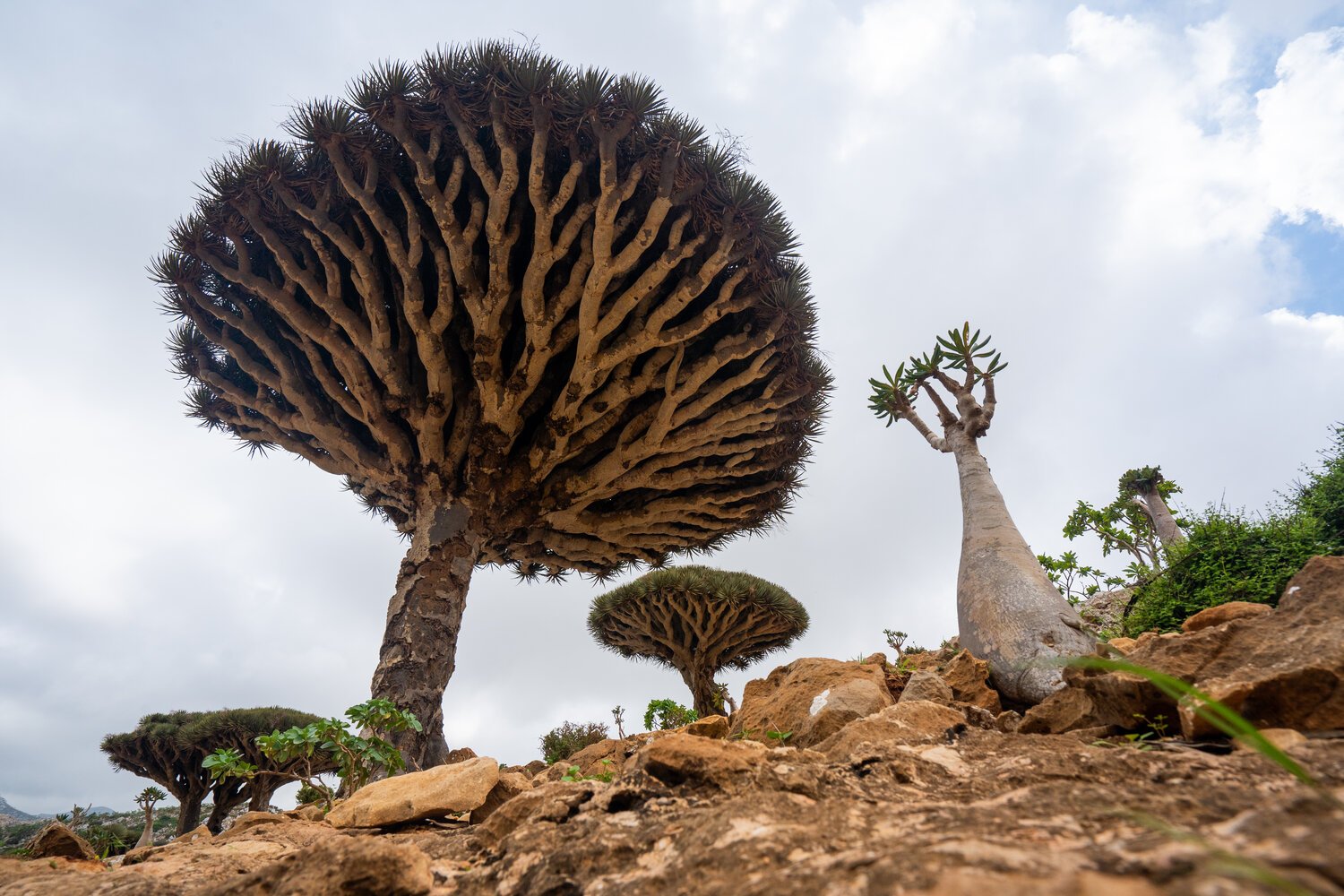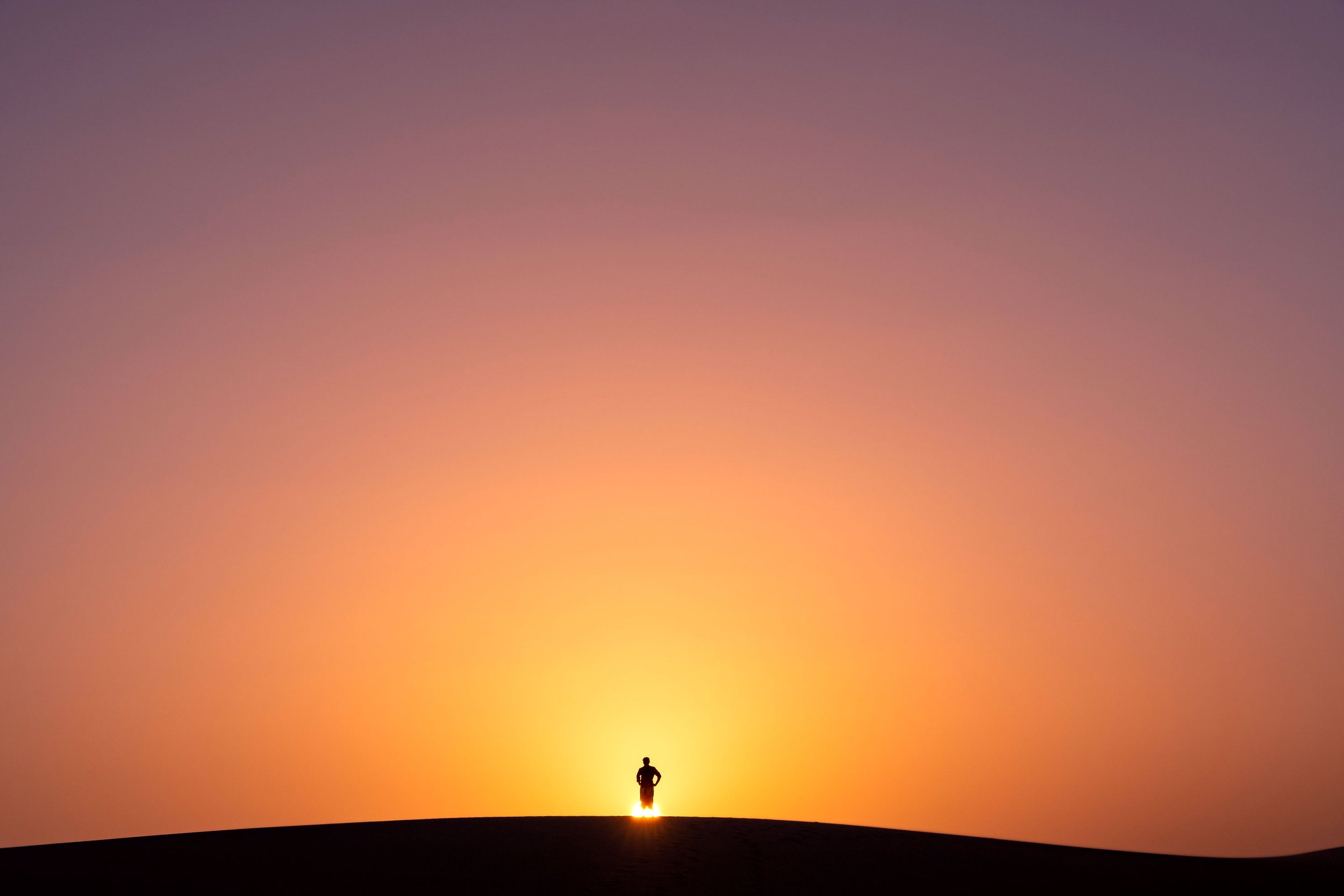What to Pack for Socotra: Expert Tips and Prep Guide
Hiking amongst the Detwah Lagoon in Socotra.
Getting Ready for Socotra
So, you’re thinking about going to Socotra? Good choice; you will not regret it. Socotra is an incredible island of ecological diversity, alien looking trees, friendly locals, and mind-blowing beaches and sand dunes. Located in the Indian Ocean between Yemen and the Horn of Africa, the island was separated from the Arabian mainland some 60 million or so years ago and developed in relative isolation, giving rise to its unique flora and fauna.
One of Socotra’s best features is how little development and infrastructure exists on the island. This means there are no resorts, few toilets, and little running water outside the main towns. Therefore, you should be prepared for camping, genuine exploration, hiking, and swimming all largely off-grid. We’ve developed this ultimate packing and preparation list to get you ready for a journey to Socotra.
Money, Exchange and ATMs
For all personal expenses, bring USD cash to the island-- you can change it on the black market once in Hadibo or in Mainland Yemen. The official exchange rate is no longer useful nor accurate, as the Rial is “pegged” at 250 per USD but may be exchanged for between 800 and 400 Rial on the black market, depending on the day (as of April 2019 the exchange rate is around 550 Rial to the US Dollar). Due to the ongoing conflict in Mainland Yemen, the rates fluctuate heavily and are not stable.
There are no ATMs on the island and credit cards aren’t accepted anywhere, so you must carry cash. Western Union and Money Gram are available in Hadibo with a limit of $2,000 per month cash withdrawal.
Electronics, Cameras, Electricity & Charging
During our treks, we do not have electricity for the vast majority of the time (if at all). Some camps have a generator we can run in the evenings, but they may or may not have sockets (Euro 2-prong, and British 3-prong) in which to charge electronics. We highly recommend carrying a solar charger and external battery packs (for charging camera batteries or laptops check this power bank out. For charging phones and tablets, a powerful USB power bank is convenient) to charge electronics and bringing several additional camera batteries for photographers. Electricity is available in Hadibo and in the larger towns.
You can typically charge electronics by USB cable when we are driving between areas of the island. Consider bringing a car cigarette-lighter charger with multiple USB ports so that 2-4 people can charge devices at a time. Most Socotris charge their phones in the cars while travelling around the island.
Bring several camera batteries since charging may prove to be difficult.
Bring more SD or CF cards than you think you will need, Socotra is highly photogenic and you won’t want to waste your camera batteries deleting and sorting through photos while in Socotra.
Socotra is dusty so make sure and protect your camera equipment from dust with a dust-proof camera protector.
A dry bag is a good idea to protect your cameras and electronics from any water damage.
UPCOMING TRIPS TO SOCOTRA
RELATED ARTICLES
Diksam plateau, Socotra.
Sleeping Arrangements, Showering, Toilets & Hygiene
Most trips to Socotra are camping trips, since the only two hotels on the island are both in Hadibo and it’s not the best place to base yourself out of to really explore the island. Camping consists of a combination of wild camping and camps that are set up by local families.
On wild camping nights there will be no showers-- and most nights in Socotra are wild camping on beaches, in the mountains or in wadis. Some family run camps have a basic concrete block shower with rainwater tanks, but many of these have fallen into disrepair since Socotra was hit by two massive cyclones in 2015.
We recommend bringing biodegradable cleansing wipes to clean the dust and sweat off between times we have a shower available.
A small bottle of hand sanitizer will be handy for keeping hands clean when there’s no sink around (most of the time).
At family camps there will usually be a simple squat toilet available, other times the great outdoors will be your toilet. If dealing with solid waste in nature it is recommended to dig a hole about 10cm deep at least 50m away from any water or camp. Be sure to properly bury and cover excrement and paper, or dispose of waste paper properly.
Carrying a packet of napkins in your pocket is a good idea, or have a roll of toilet paper easily accessible in your pack. Toilet paper isn’t widely used in this part of the world, so if you’re a heavy user, you may want to bring a few rolls with you before arriving in Socotra.
Our glamping tent, ready for a comfy night of sleep.
Food & Water
Meals are simple and communal, and restaurants do not really exist outside of Hadibo and Qalansiah. Typical Socotra fare includes: flatbread, rice, tea, honey, tomato, cucumber, beans, goat, chicken, pasta, and fish.
Most camping sites are located near wells or fresh water streams. We highly recommend bringing a water purification system with you should you want to reduce your plastic usage and not be dependant on plastic water bottles (which are, unfortunately, very common in Hadibo).
As Socotra is hot and dry, make sure to stay hydrated. Carry a strong water bottle, like a Hydro Flask, with you at all times.
As most of you know, food-borne problems can arise, and traveller’s diarrhea can strike with the change to your typical diet. It is wise to carry Loperamide/Imodium to combat diarrhea, and a broad spectrum antibiotic in the event that the Loperamide doesn’t correct the problem.
Luggage and Allowance
The maximum total weight for checked baggage on Yemenia is 30kgs per person. A hand carry baggage is allowed, with a maximum weight of 8 kilos, but they typically do not weigh the hand luggage.
Bags checked in in Cairo are sent straight through to Socotra where you will clear Yemen immigration and customs, not in Seiyun. For more detailed information on how to get to
Socotra see our article here.
Clothing & Dress Code
Light, breathable fabrics are best for exploring Socotra. Evenings in the mountains can get cool (16-22 degrees), so a light jacket is recommended.
Socotris are used to seeing tourists (but not so much in the last few years), and modest western-style clothing isn’t frowned upon. It is best to err on the conservative side especially when in villages. For women that means making sure knees and shoulders are covered completely, and hair is covered in a light head scarf. For men, this means legs should be covered, but a t-shirt is fine.
T-shirts and trekking pants are a good option for most days. Headscarves are not expected for women outside of the main towns. Hats or other head coverings are good options to protect you from the sun. Comfortable and sturdy shoes are a great idea, keeping in mind the coasts are sandy and there are also lots of fun sand dunes to climb.
Socotri men typically wear a t-shirt paired with a fouta (a long wrap-around skirt, similar to the longyis worn in Bangladesh and Myanmar). Adult Socotri women tend to be completely covered in niqabs and abayas. You can easily purchase these items in Hadibo if you wish to wear them. A proper fouta for men costs about $10-$20, and an abaya and niqab for women costs around $15. To be honest, the fouta are fun for men and women, even though Socotri women don’t wear them.
Internet & Mobile
Mobile coverage is extremely limited in Socotra, don’t expect your phone to work outside the major towns. Hadibo and Qalansiah have reliable coverage that works with most major international providers.
Don’t expect to have access to the internet. The only wifi connections to be found are in Hadiboh and even then it’s snails-pace and isn’t reliable. A Yemeni SIM card is the best shot at getting more reliable internet, and things like Facebook Messenger and WhatsApp work just fine, but SIM cards are currently not available for purchase on Socotra. You’d have to get one in mainland Yemen, and we’re not sure how easy it is for foreigners to obtain a SIM in the mainland these days.
If you need to keep in contact with people back home, we’d recommend purchasing an Inreach Explorer+. This device has the ability to send and receive text messages by satellite, not to mention it doubles as a GPS and has a SOS beacon in the event of an emergency.
Photography
You are welcome to bring photography gear, including professional level gear, to Socotra. The island is teeming with photography and videography opportunities. Some things to think about include:
Be sure to have plenty of extra camera batteries, as charging batteries throughout a trip in Socotra will be challenging.
If you need to charge during your trip, some of the best opportunities may be charging in the vehicles, so be sure to have a USB charger with a car port (“cigarette lighter”) if you plan on doing this.
A waterproof dry bag is very useful on Socotra to keeping your gear dry. Socotra is also very dusty, so the dry bag will also help in keeping dust out of your gear.
An underwater housing is great if you plan on using your camera underwater during snorkeling or diving activities. Alternatively, a GoPro Hero 7 Black does very well underwater, especially for video. For underwater housings, Nauticam makes the highest quality cases on the market, while Sea Frogs provides the best bang for buck if you don’t want to break the bank on a housing kit.
As Socotra trips begin and end in Egypt, aerial camera drones of all sorts are not allowed to be carried into Egypt. It’s possible to bring one through Cairo on transit, but we’ve had friends get stuck in customs for hours in Egypt dealing with their drones. If you can get the drone to Socotra, it’s an excellent place to fly.
Dragon’s Blood Trees on the Diksam Plateau.
Diving & Snorkelling
For individuals who are PADI certified, dive gear rentals and diving guides are available on the island, specifically at Dihamri Marine Protected Area. Dives cost about $100 for two dives, plus $50 for the diving guide (required). Night dives, depending on conditions, may also be offered for around $100~$150, payable in cash on the island.
While gear is available for rent at Dihamri and Rosh, it is advised to bring your own mask and snorkel for a better diving and or snorkelling experience. For snorkelling in other locations, you should carry your own mask and snorkel. A viper mask is well-worth the investment; we bring these on all our underwater trips. As for the snorkel, we suggest going basic with a Mares, it’s been excellent on all of our water programs.
SOCOTRA PACKING CHECKLIST
Toiletries
Sunscreen
Hydrating lotion
Toothbrush/toothpaste & dental floss
Deodorant
Razor
Bug repellant
Hand sanitizer
Feminine hygiene products
Lip balm
Hair ties/hairpins
Cotton swabs
Packets of tissues
Toilet paper
Neosporin/Bacitracin & bandages
Contact lenses and cleaning solutions (if needed)
Medications
Any rX or OTC medications you take or may need
Ibuprofen/Tylenol
Loperamide/Imodium
Antihistamine/Benadryl
Broad spectrum antibiotic
Personal first aid kit
Miscellaneous
Headlamp (very important for camping)
Flashlight (for caving)
Lightweight sleeping bag
Sleeping pad
Travel pillow (optional)
Electronics
Camera(s) and lens(es)
Extra camera battery packs
External battery pack for camera/laptop charging and/or a more standard high power USB power bank for phones/tablets
Charging cables for all electronics
Tripod (especially for astro and night photography, as well as for Hoq Cave)
Cleaning wipes
Batteries
Clothing
T-shirts
Long sleeve shirts
Light jacket or fleece
Trekking or active wear pants
Sarong (women)
Socks
Plenty of underwear/bras
Walking shoes or trekking sandals (KEEN sandals are good for these)
Flip-flops or water sandals
Hat or head covering
Light scarf
Swim suit
Sunglasses
Eyeglasses (if needed)
Visit Socotra.











Discover the ultimate guide to packing and preparing for Socotra in 2024. Get expert tips on what to bring, how to prepare, and essential travel advice to ensure a seamless adventure on this remote island.